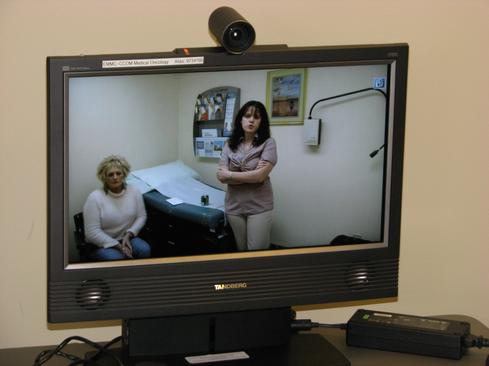Telehealth provider MDLive rides high on healthcare partnerships totaling $24 million in funding so far.


8 Healthcare Startups Catch Fire
8 Healthcare Startups Catch Fire (click image for larger view and for slideshow)
MDLive, a leading telehealth services provider, has raised $23.6 million in funding from Kayne Anderson Capital Advisors, Sutter Health, and Heritage Group, which includes some large healthcare organizations. This brings the total amount MDLive has raised to about $50 million.
The investment by Sutter Health, one of the biggest healthcare systems in northern California, signals that MDLive's strategy of partnering with healthcare providers is bearing fruit. Although Sutter is in the early stages of implementing MDLive, it is expected to follow the same path as Sentara Healthcare, a Virginia system that is also an MDLive investor.
Sentara supplies some of the local doctors in the MDLive physician network. Patients who contact MDLive can consult with Sentara's doctors by telephone and online video for minor acute-health problems. If patients need in-person care, they might be referred to an emergency room or to a physician. That might be their own doctor; however, if they don't have a regular physician and are in Sentara's service area, the MDLive physician will refer them to a Sentara doctor.
Sutter Health has not yet determined the role of its own physicians in MDLive, Don Wreden, chief medical group transformation office for Sutter, told us. But if a patient who needs to see a doctor consents, MDLive will refer that patient to a Sutter physician, he said.
[Read how one CIO learned the importance of technology in healthcare when it saved his daughter's life: Edward Marx, Healthcare CIO Of The Year.]
Randy Parker, CEO of MDLive, said in an interview that his company and Sutter haven't yet worked out the details of how Sutter doctors will participate. But "physician referrals will all go to Sutter practices" under the company's Connected Care model, which is patterned after the Sentara arrangement, he noted.
"The business model of Connected Care is for us to leverage the infrastructures of the Connected Care partner, provide the physician cross-coverage services, and, when telehealth is not appropriate, to refer those patients into the facility where more-acute cases have to be treated," he said.
Scripps Health in San Diego and Michigan's Trinity Health System have signed similar deals with MDLive, Parker said. By the end of this year, he predicted, 10 health systems that include 200 hospitals will be onboard. He hinted that some of his firm's future partners might be drawn from the investors in the Heritage Healthcare Innovation Fund, which encompasses Intermountain Healthcare, Tenet Healthcare, and Memorial Hermann Healthcare System, among other healthcare organizations.
MDLive already serves more than a million employees of self-insured companies and health plan members in northern California, Parker noted. Among them are people who work for Yahoo, Twitter, and AOL, as well as employees of the state university system and retirees who are covered by the state retirement system (CalPERS).
This represents a big opportunity for Sutter, he said, because only a small percentage of the 12 million people who live within 30 minutes' drive of a Sutter facility or practice are using Sutter providers. At the same time, he noted, MDLive can help reduce the cost of care by reducing unnecessary visits to emergency rooms.
Wreden described the opportunities created by Sutter's alliance with MDLive in broader terms. "Our doctors and patients and communities are eager for more ways to connect virtually and remotely, and MDLive is providing an option for us to explore those means," he said.
The changes going on in healthcare have motivated Sutter to expand its use of telehealth, he said. "One such change is the need for greater access to care for an expanding population of patients. Also, we need to provide more affordable alternatives to expensive ER and urgent care visits."
He added that there's a primary-care shortage in northern California, just as there is in most parts of the country. "One way to respond to that challenge is to find more ways for primary-care physicians to expand their ability to care for patients."
Healthcare organizations are becoming more interested in telehealth, Parker said, because the Affordable Care Act is forcing every organization to become more efficient in how it manages the growing population that seeks access to care.
One potential downside of telehealth is that the continuity of care can easily be disrupted by remote encounters with physicians who are not their patients' regular doctors. To prevent that, MDLive doctors send care summaries to the patients' regular providers. At Sentara and Sutter, both of which use the Epic electronic health record system, the MDLIVE doctor can send messages with attached summaries directly to the EHR, Parker said.
Ken Terry is a freelance healthcare writer specializing in health IT. A former technology editor of Medical Economics Magazine, he also is the author of the book Rx For Healthcare Reform.
Interop Las Vegas, March 31 - April 4, 2014, brings together thousands of technology professionals to discover the most current and cutting–edge technology innovations and strategies to drive their organizations' success, including BYOD security, the latest cloud and virtualization technologies, SDN, the Internet of things, Apple in the enterprise, and more. Attend educational sessions in eight tracks, hear inspirational and industry-centric keynotes, and visit an Expo Floor that brings over 350 top vendors together. Register for Interop Las Vegas with Discount Code MPIWK for $200 off Total Access and Conference Passes.
About the Author(s)
You May Also Like







